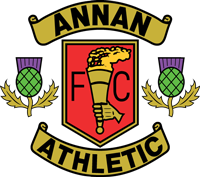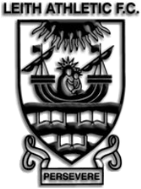
The Scottish Football League (SFL) was a league featuring professional and semi-professional football clubs mostly from Scotland. From its foundation in 1890 until the breakaway Scottish Premier League (SPL) was formed in 1998, the SFL was the top level of football in Scotland. After 1998, the SFL represented levels 2 to 4 of the Scottish football league system. In June 2013, the SFL merged with the SPL to form the Scottish Professional Football League.

The East of Scotland Football League (EoSFL) is a senior football league based in the east and south-east of Scotland. The league sits at levels 6-8 on the Scottish football league system, acting as a feeder to the Lowland Football League.

Livingston Football Club is a Scottish professional football club based in Livingston, West Lothian.
The Scottish Football League Premier Division was, from 1975 until 1998, the top division of the Scottish Football League and the entire Scottish football league system. It lay above the Scottish Football League First, Second and Third divisions.

Airdrieonians Football Club, more commonly known as Airdrie, was a Scottish professional football team from the town of Airdrie, in the Monklands area of Lanarkshire.
Edinburgh Athletic Football Club were a Scottish football team based in Edinburgh. They played in the East of Scotland Football League until they merged into Leith Athletic in 2008.

Edinburgh City Football Club is a semi-professional senior Scottish football club which plays in Scottish League Two, the fourth tier of the Scottish Professional Football League. The club play at Meadowbank Stadium, having returned there in 2021 after groundsharing at Ainslie Park for four years.

Annan Athletic Football Club is a Scottish association football club based in the town of Annan, Dumfries and Galloway. The club was founded in 1942 and competes in Scottish League Two as a member of the Scottish Professional Football League.
St Bernard's Football Club were a football club based in Edinburgh, Scotland. The club was established in 1878 and joined the Scottish Football League. They played at several different grounds before making the Royal Gymnasium Ground their long-term home. However, after having to sell it in 1943, the club was dissolved.
Abercorn Football Club was a football club based in Paisley, Scotland. The club were members of the Scottish Football League from 1890 until 1915 and folded in 1920. Abercorn were founder members of the Scottish Football League, but eventually could not compete with local rivals St Mirren. During their time in the SFL the club played at Underwood Park, Old Ralston Park and New Ralston Park. Their colours were blue and white stripes.

The Edinburgh Monarchs are a Scottish Speedway team, currently based in Armadale. They compete in the SGB Championship, racing on Friday nights during the Speedway season. The club is run by a board of directors, chaired by Alex Harkess. They club also runs a National Development League team called the Armadale Devils.
Broxburn United Football Club was a football club based at Sports Park in Broxburn, West Lothian in Scotland. The club was formed by the amalgamation of the town's two senior clubs Broxburn and Broxburn Athletic in 1912, and was a member of the Scottish Football League from 1921 until 1926.
Old Meadowbank was a multi-purpose sports facility located in the Meadowbank area of Edinburgh, Scotland. It was mainly used as a football stadium by Leith Athletic between the 1930s and 1950s and as a motorcycle speedway track. The stadium was demolished in the late 1960s and provided part of the site for Meadowbank Sports Centre, which was used for the Commonwealth Games in 1970 and 1986.
Beechwood Park, initially known as Bank Park, was a football ground in the Leith area of Edinburgh, Scotland. It was the home ground of Leith Athletic during their first seven seasons in the Scottish Football League (SFL).
New Logie Green was a football ground in the Powderhall area of Edinburgh, Scotland. It was the home ground of St Bernard's from 1889 until 1899, and was also used to host the 1896 Scottish Cup final, the only time the Scottish Cup final has been played outside Glasgow. The ground was named after a nearby mansion.
Old Logie Green was a football ground in the Bonnington area of Edinburgh, Scotland. It was the home ground of Leith Athletic and St Bernard's between 1904 and 1926, both having previously played at the neighbouring New Logie Green ground.
The Royal Gymnasium Ground was a football ground in Edinburgh, Scotland. It was the home ground of St Bernard's for most of their existence.
Edinburgh City Football Club was an amateur Scottish football club which played in the Scottish Football League in the 1930s and 1940s, but went out of business in the 1950s. A new club adopted the Edinburgh City name in 1986.
Clydebank Football Club was a football club based in Clydebank, Dunbartonshire, Scotland. The first club to represent Clydebank — which was a rapidly developing industrial "boom town" at this time — in the Scottish Football League (SFL), the second senior Clydebank F.C. were newly formed when elected to Division Two in 1914. The lower division closed down a year later due to the impact of the First World War, but after two years playing in the Western League they were elevated directly to the top flight, three clubs from the north and east of the country having been forced to stand down for the duration of the war due to travel difficulties. The economic boost the war had given to Clydebank's shipyards and factories was probably a contributory factor to the local team being chosen to fill the vacancy.
The 2021–22 East of Scotland Football League is the 93rd season of the East of Scotland Football League, and the 8th season as the sixth tier of the Scottish football pyramid system. The season began on 16 July 2021.







